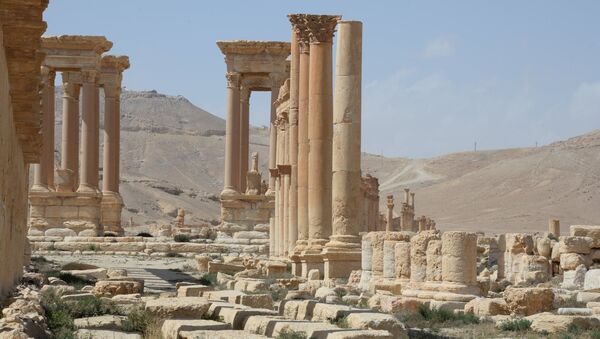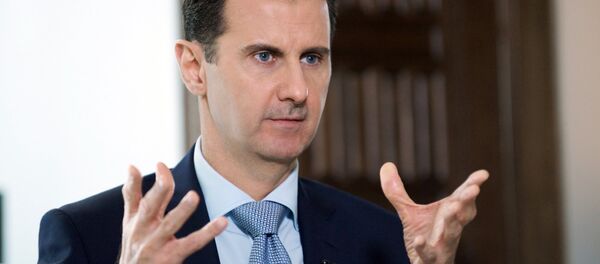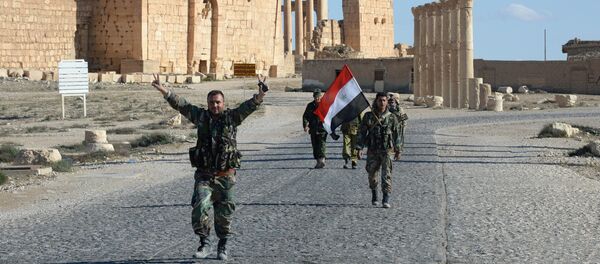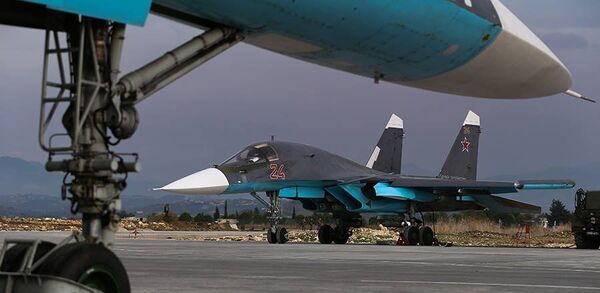He added that Russian jets destroyed most of the terrorists' command centers in the first couple of days. According to him, every day Russian aviation destroyed columns of cars carrying terrorists and ammunition, which were trying to break through to Palmyra from Raqqa and Deir ez-Zor.
"In Palmyra's suburb at the beginning of March there were over 4,000 terrorists, no less than 25 tanks and infantry fighting vehicles, over 20 units of standard and rocket artillery, over 40 mortars, about 100 anti-tank guided missiles, more than 50 armored vehicles. In addition, the terrorist had over 100 trucks converted into car bombs and UAVs," Sergei Rudskoy, the Chief of the Main Operations Directorate of the Russian General Staff said.
The liberation of Palmyra will hamper the terrorist transfer between northern and southern regions of Syria, Rudskoy said.
"The liberation of Palmyra can significantly reduce the defensive potential of the terrorists near Damascus and Aleppo," he added.
Roads from Palmyra go to Damascus, Homs, Hama, Aleppo, Raqqa, Deir ez-Zor, as well as to the oil and gas fields in the surrounding areas, Rudskoy noted.
The loss of control over natural resources deposits will negatively affect the Daesh militants’ ability to procure new weapons, according to Sergei Rudskoy, Chief of the Main Operations Directorate of the Russian General Staff.
"The loss of control over territories rich in natural resources will negatively affect the terrorits’ economic and financial situation, and hamper their ability to buy weapons, munitions and equipment and to pay wages to their fighters," he said during briefing on Thursday.
None of Palmyra's cultural treasures were damaged due to Russian airstrikes against Daesh targets.
"During the entire operation, planes from the Russian Aerospace Forces carried out airstrikes exclusively against known terrorist facilities…I would like to emphasize that none of Palmyra's cultural treasures were damaged as a result of Russian Aerospace Forces operations," Rudskoy said.
"The fighting on most of the territories of Homs, Hama and Aleppo stopped, and people were able to return to their homes," Rudskoy noted.
Approximately 180 hectares (about 445 acres) of Palmyra’s historical and residential districts need to be cleared of landmines and explosives, Sergei Rudskoy said.
He also pointed out that the mine-clearing effort is complicated by the fact that along with standard military-grade landmines Daesh militants used numerous IEDs (Improvised Explosive Devices) to booby-trap Palmyra. Therefore, Russian-made Uran-2 specialized sapper robots will be employed to clear out the most problematic areas.





